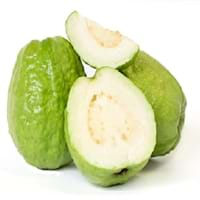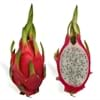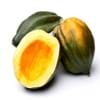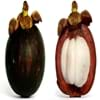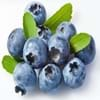Health Benefits
Anti-oxidant properties, Anti-aging benefits, Maintains healthy cholesterol level, Weight loss properties
Cancer prevention, Diarrhea treatment, Prevents constipation, Scurvy treatment, Treatment of dysentary
General Benefits
Helps in weight loss, Suppresses Arthritis
Controls blood pressure, Cures cough, Improves eye vision, Maintains healthy cholesterol level, Treatment of common cold
Skin Benefits
Anti-aging benefits, Heals sunburn, Treatment of acne
Anti-aging benefits, Brightens and lightens complexion, Hydrates skin, Treatment of skin diseases
Hair Benefits
Treatment of colored hair
Prevents hair loss
Allergy Symptoms
NA
Breathing difficulty, Coughing, Runny nose, Sneezing, Swelling of mouth, tongue or lips, Wheezing
Side Effects
NA
Hair thinning, Nail thinning, Skin problems, Tooth decay, Weakness, Possibly unsafe during pregnancy
Lactating Women
Not Available
Yes
Best Time to Eat
Any time except an hour after meal, Don't consume at night and before bed
As a snack in the late afternoon, Don't consume at night and before bed, Eat the fresh ones, avoid mixing with any other foods, don't eat after meal., Morning time (before lunch)
Vitamin A (Retinol)
Not Available
Vitamin B5 (Pantothenic Acid)
Not Available
Vitamin B6 (Pyridoxin)
Not Available
Vitamin B9 (Folic acid)
Not Available
Vitamin C (Ascorbic Acid)
Vitamin E (Tocopherole)
Not Available
Vitamin K (Phyllochinone)
Not Available
Lutein+Zeaxanthin
Not Available
Calories in Fresh Fruit with Peel
Calories in Fresh Fruit without Peel
Not Available
Not Available
Calories in Frozen Form
Not Available
Not Available
Calories in Dried Form
Not Available
Calories in Canned Form
Not Available
Calories in Pie
Not Available
Type
Berry, Citrus, Fruit vegetable, Melon, Tree fruit, Tropical
Tree fruit, Tropical
Season
Early fall, Summer
All seasons
Varieties
Selenicereus megalanthus and Hylocereus polyrhizus
Lucknow 49, Allahabad Safeda, Chittidar, Harijha, Apple guava, Hafshi, Arka Mridula and Allahabad Surkha
Color
Magenta, Pink
Green, Pink, Yellow
Origin
Central America, Mexico
Central America, Mexico, South America
Soil Type
NA
Loam, Rocky, Sandy
Climatic Conditions
NA
Sunny
Facts about
NA
- The black pigment in Guava leaves is used for textile applications.
- Guava leaves are used to make tea.
- Oils extracted from guava seeds are used in various cosmetics.
- Guava wood is used for decorative purposes.
Other Countries
NA
China, Indonesia, Mexico, Nigeria, Pakistan, Philippines, Thailand
Top Importer
China
Canada
Top Exporter
Vietnam
India
Botanical Name
Hylocereus undatus
Psidium guajava
Synonym
Pitaya, Red Pitahaya, Night blooming Cereus, Strawberry Pear, Belle of the Night, Conderella plant
Not Available
Subkingdom
Tracheobionta
Tracheobionta
Division
NA
Magnoliophyta
Class
Not Available
Magnoliopsida
Subclass
Liliidae
Rosidae
Order
Caryophyllales
Myrtales
Family
Cactaceae
Myrtaceae
Species
H. undatus
Psidium guajava
Generic Group
Cactus
Myrtle
Difference Between Dragonfruit and Guava
We might think that Dragonfruit and Guava are similar with respect to nutritional value and health benefits. But the nutrient content of both fruits is different. Dragonfruit and Guava Facts such as their taste, shape, color, and size are also distinct. The difference between Dragonfruit and Guava is explained here.
The amount of calories in 100 gm of fresh Dragonfruit and Guava with peel is 60.00 kcal and 68.00 kcal and the amount of calories without peel is Not Available and Not Available respectively. Thus, Dragonfruit and Guava belong to Low Calorie Fruits and Low Calorie Fruits category.These fruits might or might not differ with respect to their scientific classification. The order of Dragonfruit and Guava is Caryophyllales and Myrtales respectively. Dragonfruit belongs to Cactaceae family and Guava belongs to Myrtaceae family. Dragonfruit belongs to Hylocereus genus of H. undatus species and Guava belongs to Psidium genus of Psidium guajava species. Beings plants, both fruits belong to Plantae Kingdom.

